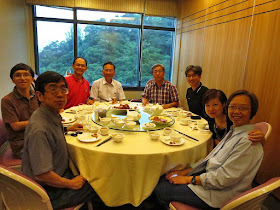In the beginning, Dr. KS Chin (Former Chairman, HKSQ) introduced HKSQ background and the guest speaker Prof. Hiroshi Osada. Prof. Osada was a Professor in Bunkyo University, and Professor Emeritus of Tokyo Institute of Technology. He is awarded the Deming Prize (JUSE) for individuals in 2009, QC Prize (JUSE) in 1989, 2000 & 2002, Quality Technology Price (JSQC) in 2000, 2002 & 2005, and Shainin Medal (ASQ) in 2015.
Firstly, Prof. Hiroshi Osada briefed “What’s new in Quality Innovation” and he reviewed Toyota to be global No.1 automanufacturer in 2008 and 2012-2014. At that time, Toyota created value for stakeholder. However, Toyota met big troubles in 2009 and 2010 because of design quality problem (defect in the Prius braking system). He raised Strategic Approach for Continuous Innovation (Radical, Incremental) was needed. Integrated strategic and innovation by scientific methods (TQM, Six Sigma) were proposed.
Then Prof. Osada discussed management subjects in 21st century. He said sustainable growth needed Value Creation (value for customer, society, employee, business partner & shareholder). In order to survive in mega competition, we needed differentiation of our product (Creativity) and optimum resource allocation (Focus) which was Value Capturing.
Prof. Osada introduced his proposed Management System Model from Driver, Enabler to Performance and then through feedback loop to complete the PDCA cycle. He also explained how SMBP worked as Innovation (Breakthrough) tool. In daily management, it had control items for maintenance or improvement. By using policy (SMBP), it could enhance the overall quality level.
After that Prof. Osada explained SMBP was “Strategic Planning (S7 – Strategic Seven Tools)” plus “Management by Policy (MBP)”. The following diagram showed component of SMBP. He said the process of establishing business strategy must be made to match MBP on a practical level.
The Strategic Seven Tools (S7) was briefed below.
1. Environmental Analysis (Weighing the attractions of the industry)
2. Product Analysis (Benchmarking products)
3. Market Analysis (Attracting users)
4. Product-Market Analysis (Comprehending competition and positioning)
5. Product Portfolio Analysis (PPM)
6. Strategic Elements Analysis (Determine strategic factors)
7. Resource Allocation Analysis (Priority allocation of resources)
The evaluation items included Quality (Q), Cost (C), D (D1 – Demand Control, D2 – Delivery Time), Safety (S) and Environment (E).
The following demonstrated how policy (e.g. reduction of energy cost) to implement in each session.
Finally, Prof. Osada introduced his TQM model to us and he hoped that we could make innovation through SMBP in TQM to achieve sustainable growth. Lastly, he concluded Quality Innovation was Value Creation and Capture.
At end of the seminar, Mr. Peter Fung (Chairman, HKSQ) presented a souvenir to Prof. Osada
We had dinner with guests together in CityU. We also gave him our 25th Anniversary Book and Newsletter headline in 2014. We told Prof. Osada that HKSQ is going to the 30th Anniversary in 2016.
Then we took a group photos.
(Left: Dr. Ken Yau, Dr. KS Chin, Mr. Karson Chui, Mr. Peter Fung, Prof. Osada, Ms. Minda Chiang and I)
(Left: Mr. Karson Chui, Dr. Ken Yau, Mr. Peter Fung, Prof. Osada, Dr. KS Chin, I, Ms. Minda Chiang and Dr. Catherine Chan (President, HKQFDA))
Reference:
HKSQ - www.hksq.org
JIS Q9023:2003 Performance improvement of management system - Guidelines for management by policy
JSQC-Std 32-001 (E):2014 Guidelines for Daily Management
Hiroshi Osada (1998) “Strategic management by policy in total quality management” Srategic Change, Vol. 7, pp277-287.










沒有留言:
發佈留言